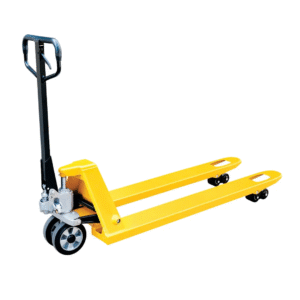A great ecommerce website is more than nice visuals and clean layouts. It’s about creating an experience that guides visitors to exactly what they’re looking for — without frustration or confusion. That’s where UX (User Experience) comes in.
And as any experienced ecommerce website design agency will tell you, good UX isn’t just helpful — it’s a major revenue booster.
In this blog, we’ll explore why UX matters in ecommerce, what agencies have learned from working with real brands, and how you can start improving user experience today — even without coding skills.
What Is User Experience (UX) in Ecommerce?
UX stands for User Experience — simply put, it’s about how a customer feels when using your website. It includes everything from how fast your site loads to how easy it is to find products.
Key elements of UX include:
-
Fast loading time
-
Intuitive navigation
-
Clear product information
-
Easy checkout
-
Mobile responsiveness
-
Trust-building features
Think of UX like your store’s customer service. Even if your products are great, a confusing or slow site will frustrate users and hurt sales.
Why UX Matters More Than Ever
Online shoppers have become extremely impatient — and picky. With so many ecommerce options available, they won’t tolerate bad UX. Research shows:
-
47% of customers expect a website to load in under 2 seconds
-
88% of online consumers are less likely to return to a website after a bad experience
-
53% of users abandon a page if it takes more than 3 seconds to load
What does that mean for your business? Good UX isn’t optional — it’s essential.
What Ecommerce Website Design Agencies Do for UX
Most business owners stop after installing a theme, adding products, and maybe installing a few plugins. But most themes don’t address deeper UX issues — and that’s where design agencies step in.
Here’s what a skilled ecommerce website design agency typically focuses on:
1. Improve Website Loading Speed
A slow website kills conversions. UX-focused agencies work on:
-
Reducing unnecessary code
-
Compressing images
-
Removing unnecessary apps
-
Optimizing server performance
Faster websites not only generate more sales but also rank better on Google.
2. Simplify Navigation and Product Browsing
Customers should never feel lost on your site. Agencies design smart navigation like:
-
Easy-to-understand menus
-
Clear product categories
-
Breadcrumbs and search bars
-
Filters and sorting options
When users find what they want quickly, they stay longer — and buy more.
3. Enhance Product Pages for Higher Conversions
Product pages are where customers make decisions. Good UX includes:
-
High-resolution images
-
Zoom-enabled galleries
-
Detailed yet readable descriptions
-
Trust indicators like reviews and ratings
-
Cross-sell widgets (e.g., “Frequently Bought Together”)
These elements build trust and increase cart value.
4. Create a Seamless Mobile Experience
Over half of ecommerce traffic—and purchases—now happen on smartphones. Yet many sites still break or slow down on mobile.
Agencies optimize for:
-
Finger-friendly buttons
-
Mobile-optimized images
-
Simplified checkout
-
Streamlined mobile menus
If your store isn’t mobile-friendly, you’re losing money.
5. Build a Frictionless Checkout Process
Most abandoned carts happen during checkout. Common reasons include:
-
Too many steps
-
Forced account creation
-
Hidden fees
-
Inconvenient payment options
UX-driven agencies simplify the process by:
-
Enabling guest checkout
-
Auto-filling information
-
Adding trusted payment gateways
-
Keeping the layout distraction-free
This leads to fewer drop-offs and more completed purchases.
6. Use Smart UX Tools and Analytics
UX isn’t guessing — it’s data-driven.
Agencies use:
-
Heatmaps to see where users click or drop off
-
Funnel tracking to analyze the purchase flow
-
User recordings to review real sessions
-
A/B testing to optimize page elements
They make decisions based on user behavior, not opinions.
What Most Store Owners Get Wrong About UX
Many ecommerce owners believe they have a UX-friendly site just because “it looks clean” or “uses a modern theme.” But UX goes much deeper.
Here are common UX mistakes agencies find over and over:
-
Overloaded homepage with too much info
-
Generic product descriptions
-
Poor mobile experience
-
Too many pop-ups or distractions
-
Cluttered navigation
-
Lack of trust signals (badges, reviews)
-
Slow load times due to heavy apps or scripts
These issues cause users to leave before buying — even if your products are great.
User Behavior Has Changed — Has Your UX?
Today’s customers have different expectations:
-
They want speed (instant loading)
-
They want clarity (simple titles, visible prices, clear benefits)
-
They want trust (reviews, return policies, badges)
-
They want personalization (relevant product suggestions)
-
They want convenience (guest checkout, social login, fast payments)
If your store doesn’t align with how shoppers behave, UX can help bridge the gap.
Real Insights from Ecommerce Website Design Agencies
Let’s take a look at a few key takeaways experts share after working with hundreds of ecommerce clients:
Insight #1: Small UX Fixes Can Double Conversions
You don’t always need a complete redesign. Sometimes, small changes can create a big impact. Even simple adjustments — like optimizing button placement, adjusting product layout, or refining your checkout flow can help improve website UI/UX in a powerful way that boosts user engagement and conversions.
Example: Just improving the “Add to Cart” button visibility increased sales by 22% for one client.
Insight #2: Personalization Drives Repeat Purchases
Personalized recommendations and dynamic content can make users feel understood. Ecommerce design agencies frequently integrate:
-
“Recommended for you” widgets
-
Personalized pop-ups based on browsing behavior
-
Targeted banner images and offers
Customers respond positively when the site feels tailored to them.
Insight #3: Trust Comes Before Every Transaction
A first-time shopper is always unsure. To build trust, agencies add:
-
Clear return and refund policies
-
Customer reviews and star ratings
-
Security badges across checkout pages
-
Live chat or customer support modules
These elements reassure customers and increase conversion rates.
UX vs. UI — What’s the Difference?
It’s easy to confuse UX with UI. Here’s the difference in simple terms:
-
UI (User Interface): How things look — colors, fonts, layout, visuals
-
UX (User Experience): How things work — ease of use, navigation flow, structure
A pretty website without good UX is like a beautiful shop where the doors won’t open.
How UX Improves SEO and Marketing Efficiency
Google prioritizes websites with better UX. Better UX means:
-
Lower bounce rates
-
More engagement
-
More product views
-
Clear structure
-
Faster performance
This leads to higher rankings in search results, which means more organic traffic and lower ad costs.
UX also makes your ads work better. If your landing pages are user-friendly, customers are more likely to convert. That saves money on ad spend and increases ROI.
The Future of UX in Ecommerce
Technology is making UX smarter than ever before. Agencies are now integrating:
-
AI-powered search to show more accurate results
-
Voice commerce features for hands-free shopping
-
Augmented reality (AR) to let customers “try” products
-
Personalized email automation based on behavior
UX is no longer just about design — it’s about creating meaningful experiences with the help of smart technology.
Do You Really Need an Ecommerce UX Agency?
If you want to grow your revenue, improve conversion rates, and simplify your customer journey — yes, a UX agency can help you get there faster.
But if you’re on a tight budget, start by improving these areas:
-
Website speed
-
Mobile responsiveness
-
Navigation simplicity
-
Product information clarity
-
Checkout process
Then level up by working with UX experts for long-term growth.
Final Thoughts:
User experience is no longer a “nice-to-have.” It’s the backbone of every successful ecommerce store. It directly impacts how customers live, shop, and make purchasing decisions online.
Agencies offering professional ecommerce website design services understand this shift. They analyze data, enhance layouts, and build smart systems that help customers enjoy their journey and help you increase your revenue.
Good UX = better profits, a stronger brand reputation, and a shopping experience that keeps customers coming back


